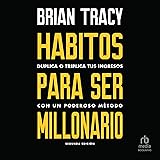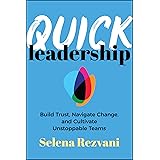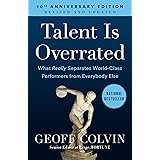The modern career landscape is a dynamic environment, far removed from the stable, lifelong employment paths often chosen by previous generations. Workers today are increasingly active in managing their careers, with a significant number contemplating job changes. As highlighted in the video above, a staggering 95% of American workers have indicated plans to seek new employment in 2024, a trend largely fueled by the pursuit of higher income. This pervasive desire to advance careers and secure better compensation leads many to ponder a critical question: how long should you stay at your job?
The decision to switch roles is multifaceted, influenced by a blend of personal aspirations, economic realities, and evolving workplace expectations. Understanding the various factors at play is crucial for making informed career moves that benefit your long-term professional growth and financial well-being.
The Quest for Compensation and Career Advancement
One of the most compelling reasons for employees to consider new opportunities is the prospect of a higher salary. According to recent data, 45% of American workers explicitly state a need for increased income. This isn’t just a feeling; it’s often a strategic financial reality.
The Salary Bump: Job Switching vs. Staying Put
Empirical evidence suggests that job switchers typically see faster and more substantial salary increases compared to those who remain with their current employers. For instance, in February 2024, individuals who switched jobs experienced an average salary increase of 5.9% year-over-year. In contrast, those who stayed at their jobs for more than three months saw a more modest increase of 5.1%. This gap, while seemingly small, can compound significantly over a career, leading to considerable differences in lifetime earnings. As one expert in the video, Kyyah Abdul, shared, she nearly doubled her salary within a year and a half of job switching, subsequently increasing it by $15,000 to $40,000 annually.
Beyond the Paycheck: Growth and Opportunities
However, salary is not the only driver. A lack of perceived growth opportunities within a current role consistently ranks high among reasons for departure. Many employees feel like a plant in a small pot—once their roots fill the container, they need new soil to continue growing. Switching companies often presents the fastest route to a higher-level role or a more senior position, both in terms of responsibility and income. Internal promotions often depend on a position opening up, whether due to someone leaving, being promoted, or the company experiencing significant expansion. This waiting game can feel restrictive, particularly for ambitious professionals.
Notably, Gen Z workers are 36% more likely than other generations to prioritize advancement opportunities. They are often less inclined to wait for internal growth paths to materialize, preferring to seek out opportunities where they can immediately take on new challenges and expand their skill sets.
Understanding “Job Hopping” and Employer Perspectives
The concept of “job hopping”—moving from one employer to another within a relatively short period—has long carried a certain stigma. Historically, staying with one company for decades was seen as a mark of loyalty and reliability. Yet, the modern employment landscape is reshaping this perception.
The Shifting Tides of Loyalty
The traditional model, where employees might spend an entire career at one company, often for benefits like pensions, has largely faded. This shift means that the incentives for lifelong loyalty have diminished, and consequently, employees feel less tethered to a single organization. As Maddie Machado aptly notes in the video, while companies might expect an “unrealistic level of loyalty,” employees must often “play the game” to advance their careers, even if that means making it seem like they plan to stay long-term.
Despite this, employers do monitor work history. Turnover is costly and time-consuming for organizations. Approximately 90% of organizations express concern about employee retention, underscoring the importance of keeping talent. Companies with strong learning cultures, offering upskilling and internal mobility, tend to see higher retention rates. Nevertheless, a “Goldilocks dynamic” exists; some turnover can be healthy, preventing stagnation and ensuring fresh perspectives. Employers are becoming more forgiving of work history, particularly if job switches are driven by a pursuit of learning, career advancement, or broader experience rather than just a minor pay bump.
Navigating the Risks of Frequent Moves
While strategic job switching can accelerate career growth, it’s not without potential pitfalls. Moving too quickly might mean leaving money on the table, especially concerning benefits that accrue over time, such as 401k matching programs which often require a certain tenure to fully vest. Julia Pollak cautions against rising “up the ranks too quickly” and becoming an “expensive head that’s sort of easy to chop in any kind of downturn.” Employers also value a demonstrated track record of sustained performance and reliability, which typically develops over a longer period.
Beyond Salary: Holistic Career Well-being
While money and growth are powerful motivators, they are part of a broader picture of career well-being. Other significant factors often drive the decision to seek new employment, reflecting a more holistic view of professional satisfaction.
Seeking Better Benefits and Work-Life Balance
A job is more than just a salary; it encompasses a package of benefits, a workplace culture, and an impact on personal life. Many individuals leave jobs in search of better benefits, which can include improved health insurance, generous paid time off, or professional development allowances. Furthermore, the desire for better work-life balance is a frequently cited reason for job changes. As Tom Gimbel illustrates in the video, if higher pay alone guaranteed happiness, investment banks would be the happiest places to work, which is notoriously not the case. How employees are treated, the interpersonal skills within a team, and the overall company culture often weigh more heavily than just compensation.
Escaping Toxic Environments and Aligning with Aspirations
A toxic work environment can be incredibly draining, impacting mental health and overall productivity. Leaving such a situation is not merely a career move but a step towards personal well-being. Moreover, some workers have distinct career aspirations that their current roles cannot fulfill. Kyyah Abdul, for example, intentionally used each job as a stepping stone to acquire specific skills necessary for her eventual goal of working for herself. She would move on if she felt she had “obtained the skill that [she] needed” or wasn’t getting opportunities to do so.
This approach highlights a shift in perspective among younger generations, who increasingly ask: “How does my career serve me?” rather than feeling obligated to serve a single company or career path indefinitely. This empowers individuals to make choices that align with their evolving goals, priorities, and life stages, which, as Anna Belyaeva points out, tend to change every two to three years.
The “Right” Time: Age, Accomplishment, and Market Realities
So, considering all these factors, how long should you stay at your job? The answer is not a simple number, but rather a strategic assessment that balances personal development, market conditions, and long-term career goals.
Age as a Factor in Job Tenure
Survey data reveals interesting trends in job tenure. Americans consistently stay at their jobs for a median of three to four years, with the median tenure being 4.1 years in 2022. However, this average masks significant differences across age groups. Workers aged 20 to 24, for instance, typically stay at their jobs for less than one and a half years. As individuals age, their median tenure increases. This suggests that what often appears as a generational tendency towards job hopping is more accurately an age-driven phenomenon.
The Bureau of Labor Statistics found that American adults born between 1957 and 1964 held an average of 12.7 jobs between the ages of 18 and 56, with nearly half of those jobs held before the age of 25. This underscores that early career exploration, characterized by shorter stints, is a historical pattern, not just a modern one.
Focus on Skills and Accomplishments, Not Just Time
Career experts suggest a powerful paradigm shift: instead of asking “how long should you stay at your job?”, ask “how much have you accomplished?”. Kyyah Abdul emphasizes removing the focus on time or even immediate money (if current compensation is sufficient to live comfortably) and instead prioritizing skill acquisition. When you are comfortable with the skills you’ve gained and feel ready for the next level of challenge, that’s often the signal to consider a move. It’s like building a personal toolkit; once you’ve mastered a particular set of tools, you might seek a new project that demands new ones.
Strategic Timing and Economic Climate
The broader economy and current hiring climate play a critical role in strategic job moves. Finding a new job can be a lengthy process, often taking 6 to 12 months. In January 2024, the Glassdoor Employee Confidence Index plummeted to its lowest point since 2016, reflecting increased difficulty in the job market. A 2023 survey from Insight Global revealed that 55% of unemployed adults are experiencing burnout from prolonged job searches, with two-thirds of Gen Z workers particularly affected. Despite this, 75% of Gen Z workers report being willing to quit without a new job lined up, a risky move that many career experts, including Kyyah Abdul, advise against.
Leaving a job without a clear next step can lead to significant financial stress and prolonged unemployment. Therefore, assessing the job market, understanding the demand for your skills, and ideally securing a new opportunity before resigning are crucial components of a strategic job change.
Making Intentional Career Decisions
Ultimately, the question of how long should you stay at your job is deeply personal and requires introspection. While there’s no universally “wrong” reason to want to leave a job, the wisdom lies in being strategic and intentional about your departures.
Early in your career, there is generally more leeway for experimentation. As Maddie Machado explains, a 22-year-old making many moves is simply exploring options and gaining experience, and these are rarely “career mistakes.” However, as you mature into your late 20s or early 30s, career moves need to become more calculated. At this stage, you’re likely establishing a substantial salary and benefits, making the impact of a “bad career mistake” much more significant.
For individuals who are highly self-aware and capable of truthfully assessing their skill set and readiness for new challenges, strategic job switching can be immensely beneficial. It allows for the deliberate accumulation of diverse experiences and skills that align with long-term aspirations, such as building a consulting firm or reaching a senior leadership role. However, without this introspection and understanding of your developmental stage, frequent job changes may not yield the desired outcomes and could even impede progress.









